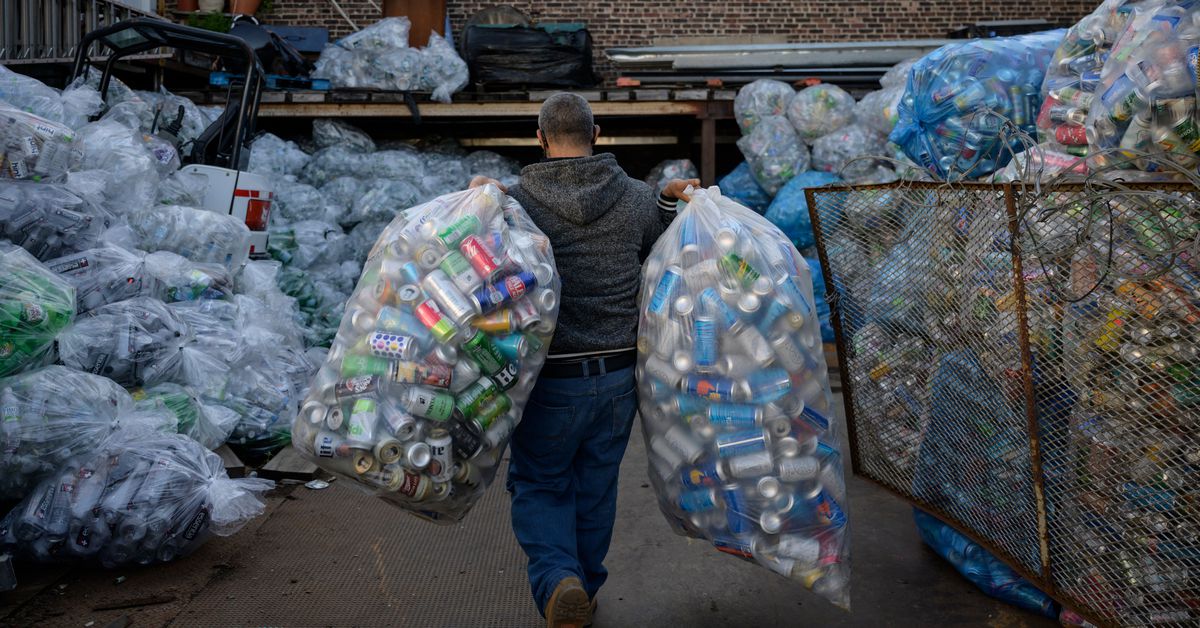The US finally adopts a national recycling strategy
The Environmental Protection Agency announced a new national recycling strategy today, the agency’s first ever such commitment, according to the Washington Post.
It’s a roadmap for the US to achieve a goal of recycling at least half of its municipal waste by the end of the decade. That’s a steep rise considering the US’ recycling rate has actually declined since 2015, and was only at about 32 percent of all municipal waste in 2018 (the most recent year for which there’s EPA data).
The recycling plans the EPA announced today are just the first piece in “a series” of forthcoming documents the agency plans to release to work towards a “circular economy,” or an economy where resources are recovered and reused to make new products rather than allowed to wind up in landfills. It’s a sort of tacit acknowledgement that recycling alone doesn’t make a huge dent in the world’s trash problems.
Inadequacies with America’s recycling system were laid bare after China stopped accepting much of our so-called recyclable garbage in 2018, including post-consumer plastic. Some municipal recycling programs were forced to close or cut back on their programs, which ultimately sent more stuff to landfills and incinerators. Programs that stuck around are still recovering from that global shock, on top of having to adapt to new consumer habits accelerated by the COVID-19 pandemic.
A dearth of federal recycling policy has, until now, hampered efforts to solve the problem. There are several key tactics the EPA plans to employ to meet its new recycling goal. For starters, the US will have to do a better job of collecting recyclable materials. The uptick in online shopping has changed where packaging waste winds up. There’s less cardboard for instance, coming from shopping malls and grocery stores because of the popularity of home deliveries. That has posed problems for recycling companies because cardboard coming from peoples’ homes tends to be dirtier than retailers’ trash, experts tell The Verge. Often times, cardboard or plastic that’s too contaminated with food or other items can’t be recycled. So the EPA intends to do more public outreach and education to ensure more of the stuff people throw out actually gets recycled.
The EPA also wants to develop new markets for recycled materials so that it’s worth it for companies to recycle. That means there could be new policies or financial incentives on the way to boost demand for recycled materials. The strategy document mentions, for example, a “Demand Challenge partnership program” that would recognize companies for using more recycled materials in their products. Notably, the EPA says it might finally “explore” ratification of the Basel Convention, a 1989 international treaty aimed at reducing the flow of e-waste and other hazardous trash from wealthy to lower income nations.
The new strategy also marks the first time, the EPA says, that the agency’s recycling plans will connect the dots between waste, environmental injustice, and the climate crisis. The modern environmental justice movement, which fights to stop pollution from disproportionately burdening low-income neighborhoods and communities of color, has its roots in protests against a landfill built in a predominantly Black community in North Carolina in the 1980s.
Recently, plastic pollution has been in the limelight as a growing body of research finds plastics building up in oceans, sea life, and humans, too. Plastics are also tied to another environmental crisis: climate change. They’re made from fossil fuels, and oil and gas companies are looking to lean more heavily into their plastics business as renewable energy eats into their profits.
The plastics industry has a history of promoting recycling as the solution for its waste problem. But in reality, only about nine percent of all plastic waste has ever been recycled. Some environmental experts and activists are also concerned that developing the market for recycled plastic might actually drive up demand for new plastics. That’s because the quality of materials typically degrades each time they’re re-hashed, which is why products made with recycled plastic are often reinforced with new plastic.
Stopping heaps of plastic and other garbage from piling up requires systemic changes in how we use materials, not just how we handle them at the end of their life. That’s why the EPA says it’s working towards a circular economy, which addresses the entire lifecycle of a good that’s produced. Ultimately, achieving a circular economy will entail using fewer raw materials, designing products that last longer and use fewer resources, and having policies and infrastructure in place to efficiently collect items for reuse.
Basically, there needs to be a concerted effort to stop producing junk in the first place.
For all the latest Technology News Click Here
For the latest news and updates, follow us on Google News.

